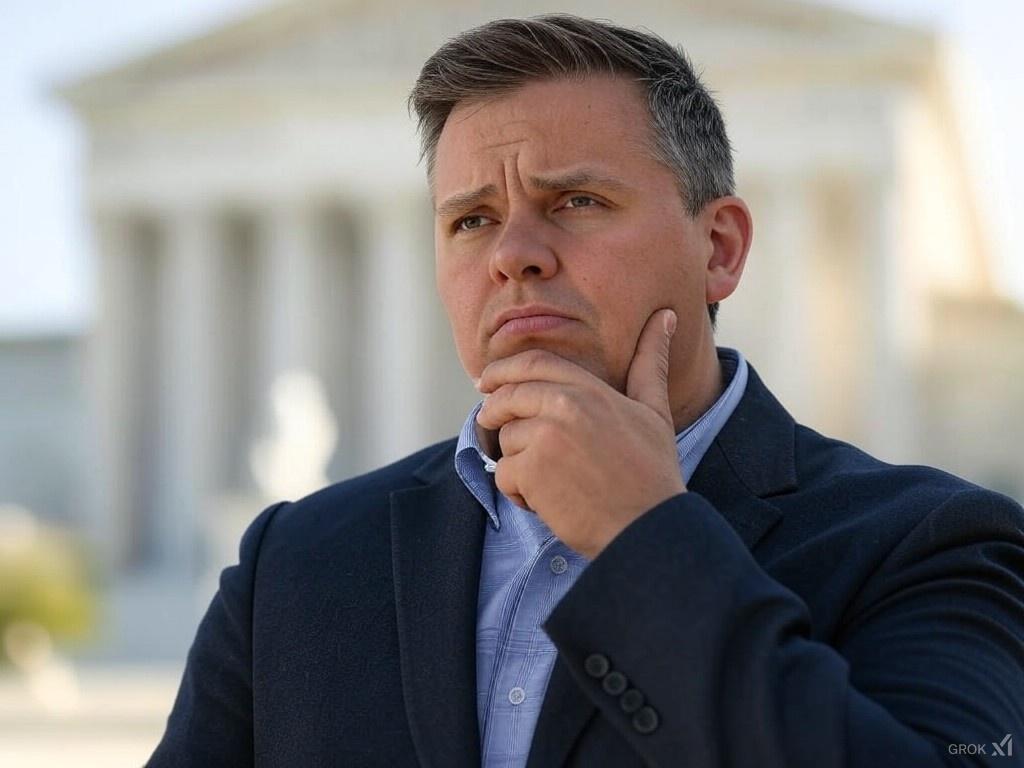This might be the most important case regarding the Second Amendment since Heller.
Kolbe v. Hogan
This case started when the Fourth Circuit Court issued their opinion in Kolbe v. Hogan. Fourteen judges sat, en banc to hear a challenge to Maryland’s “assault weapon ban”. Only four of the judges found that the Second Amendment protected the right of The People to acquire, posses, and use “assault weapons”.
Judge King wrote the opinion of the majority. They start with story telling.
You can always tell that an opinion will be a great legal work when the opinion starts with stories of events taking place, outside the legal system. In this case, they decide that the most professional way to start an opinion is by telling their version of the evil Bushmaster AR-15 type rifle that killed so many children at Sandy Hook Elementary School.
The entire reference to human autonomy is “a gunman” Everything else is the action of those evil “assault weapons”.
They go on to list other mass shootings, all done by evil black rifles.
Using the standard tap dance of the time, the lower court found that the law implicated the Second Amendment and then decided the government should win, so selected “intermediate scrutiny.”
A three judge merits panel of the Fourth Circuit split for The People, vacating the lower court’s rulings and telling them to “do it over, using strict scrutiny.”
The Fourth Circuit could let this stand, so the en banc vacated the merit panel’s opinion and heard the case.
The en banc Fourth Circuit then decided that the proper position wasn’t strict scrutiny, nor even intermediate scrutiny. No, they decided that “large capacity magazines” and “assault weapons” don’t even implicate the Second Amendment because they are “like” “M-16 rifles.”
Bianchi v. Frosh
This Second Amendment Challenge was started as one of the many cases attempting to get another Second Amendment case before the supreme court. It was a direct challenge to Kolbe.
As such, the case barely paused for a rubber stamp at the district level. The district court, correctly, ruled that they had to follow the superior court, the fourth circuit, and found for the defendants (bad guys).
The gist of the court’s opinion was: This question has been asked and answered by the circuit court. You lose.
The plaintiffs filed an appeal, as planned.
This went before a three judge merits panel. That panel did the same thing the district court did. “The en banc has been asked this question and they answered. You lose.”
On December 20, 2021, the plaintiffs filed a petition for a writ of certiorari. At that point, this became one of a half dozen Second Amendment cases waiting for a writ of certiorari.
In the end, the Supreme Court chose to hear New York Pistol and Rifle Association v. Bruen.
Justice Thomas wrote the opinion in Bruen and it was powerful.
On Aug 1st, 2022, certiorari was granted in Bianchi. The Supreme Court vacated the opinion of the Fourth Circuit and remanded the case to “do it right”.
Moving at lighting speed, the Fourth Circuit merit’s panel scheduled and heard the case on Dec. 6th, 2022.
And then nothing. For over a year, nothing.
Then on January 12th, 2024, the Fourth Circuit granted a rehearing en banc. Nobody had requested a rehearing, the Fourth just decided to yank it from the merits panel’s hands before they could issue their opinion.
Reading between the lines and often on the lines, it was clear that the merits panel was going to issue an opinion favorable to The People. The dissenting judge refused to provide the dissenting opinion, keeping the opinion from being published.
The en banc Fourth Circuit heard oral arguments on March 20th, 2024.
The plaintiffs filed another petition for writ of certiorari, but it was denied because the case was still in an interlocutory state.
In a surprising move, the Fourth Circuit published their opinion in only 5 months. It was as bad as we expected.
The majority opinion with respectful consideration and benefit of Bruen” upheld their original judgement. They found that they had done it right in Kolbe and that “assault weapons” are outside the ambit of protection of the Second Amendment.
After the Supreme Court decided
New York State Rifle and Pistol Ass’n v. Bruen, 597 U.S. 1 (2022), it remanded this case for us to determine whether Maryland’s “assault weapons” ban violates the Second Amendment. Yet before the panel could issue its opinion, our court voted to take the case en banc. Now, the majority decides that Maryland’s ban is perfectly consistent with the Second Amendment. But the majority’s rationale disregards the Second Amendment and controlling precedent. Rather than considering the Amendment’s plain text, the majority sidesteps it altogether and concocts a threshold inquiry divorced from the right’s historic scope. To make matters worse, it then misconstrues the nature of the banned weapons to demean their lawful functions and exaggerate their unlawful uses. Finally, to top it all off, the majority cherry-picks various regulations from the historical record and pigeonholes them into its preferred—yet implausible—reading of our Nation’s historical tradition of firearms regulation.
—
No. 114 Dominic Bianchi v. Anthony Brown, No. 21-1255, slip op. at 85 (4th Cir.) Judge Richardson, dissenting
Snope v. Brown
This case has been going on for so long that the AG of Maryland has changed, and might change again before this case is heard. The original lead plaintiff has left the state of Maryland, making David Snope the lead plaintiff.
The petition for writ of certiorari was filed August 21st, 2024.
The state, waited to the last minute, then filed a motion to extend the time to respond. This should have been a no-brainer. They knew this case was going to be appealed. This is just the state intentionally stalling.
By September 23rd, all the plaintiff and amicus curiae supporting the plaintiff had been filed. Not a single filing by the state.
On October 9th, the state requested another 30 days. This was limited to just two extra weeks. This is a big win for The People.
The Supreme Court is now in the 2024 term. This runs from August 2024 through June 2025. All briefings and arguments need to be completed in time for the court to come to a decision and write their opinions before the end of the term.
This means that any case that will be heard in the 2024 term must be granted cert. before the end of January. With final briefings filed by November 12th, the case is conferenced for December 13th. If the state had gotten a 30-day extension, the case might not have been conferenced until mid-January, pushing oral arguments into the 2025 Term.
Remember, this was before the election. The state was hoping that they could push the case into the next presidential term and hope for a more favorable to the state Supreme Court.
In every case before the Supreme Court, the most important part is making sure the question presented is representative and will focus the opinion correctly.
Here is how the state put the question:
Should this Court decline to grant certiorari to consider the constitutionality of Maryland’s assault weapons ban where (1) that ban is consistent with this Court’s recognition in District of Columbia v. Heller, 554 U.S. 570 (2008), that jurisdictions may ban “weapons that are most useful in military service—M-16 rifles and the like”; (2) the Fourth Circuit faithfully applied New York State Rifle & Pistol Ass’n v. Bruen, 597 U.S. 1 (2022), to conclude that Maryland’s law is consistent with this Nation’s historical tradition of “regulating those weapons that were invented for offensive purposes and were ultimately proven to pose exceptional dangers to innocent civilians,” Pet. App. 69a; and (3) there is no need to resolve a conflict among the lower courts?
Wow, that is difficult to parse. I think it might be a question, there is a question mark at the end of the paragraph.
Translation:
- Is Maryland’s assault weapon ban consistent with Heller?
- Did the Fourth Circuit faithfully apply Bruen?
- Is there a need to resolve a conflict among the lower courts?
I was once a teaching assistant for a computer science professor. His examines were horrible. He thought I was there to proctor the exam. Instead, I took the exam. Scored my answers against the answer sheet outside in the hall. Then told him which questions he would be throwing out as bad questions.
He loved to add negatives to his questions. I can’t even write a question the way he did. It wasn’t uncommon for one of his multiple choice questions to have four or more negatives in it. I taught the students to count the number of negatives. If it was an odd number, then it is a true negative. If it was an even number, then it was a positive.
This increased the grades of all the students significantly.
As normal, the next lecture was students challenging questions on the exam. After the second challenge, he took my list, read it to the class stating, “These are the questions that Chris said to remove. I’m going to remove them.”
He gained 75% of the lecture time back. After the next exam, he didn’t even let the challenges start. He read the list of questions that were being tossed.
This “question” reminds me of attempting to decode Dr. Reed’s exam questions.
Compare the state’s convoluted “question” with the plaintiff’s question:
Whether the Constitution permits the State of Maryland to ban semiautomatic rifles that are in common use for lawful purposes, including the most popular rifle in America.
Hmm, that is much easier to parse.
Conclusion
We should know by mid-January if this case is granted cert. If it is, you can expect all the usual suspects to jump in with amici curiae briefs. Some will be fun reading, most will be emotional blackmail.





